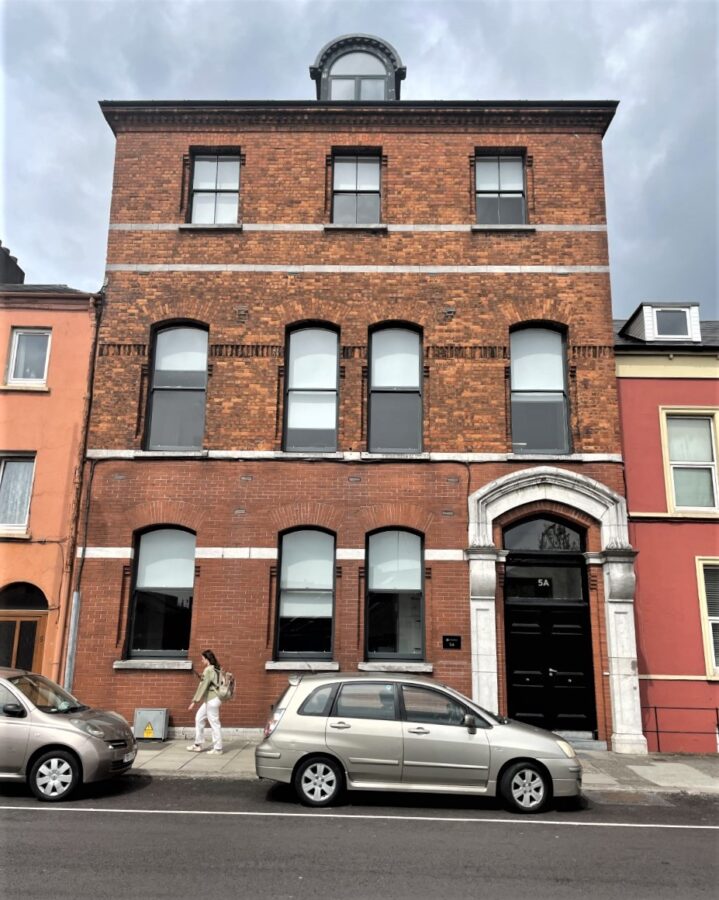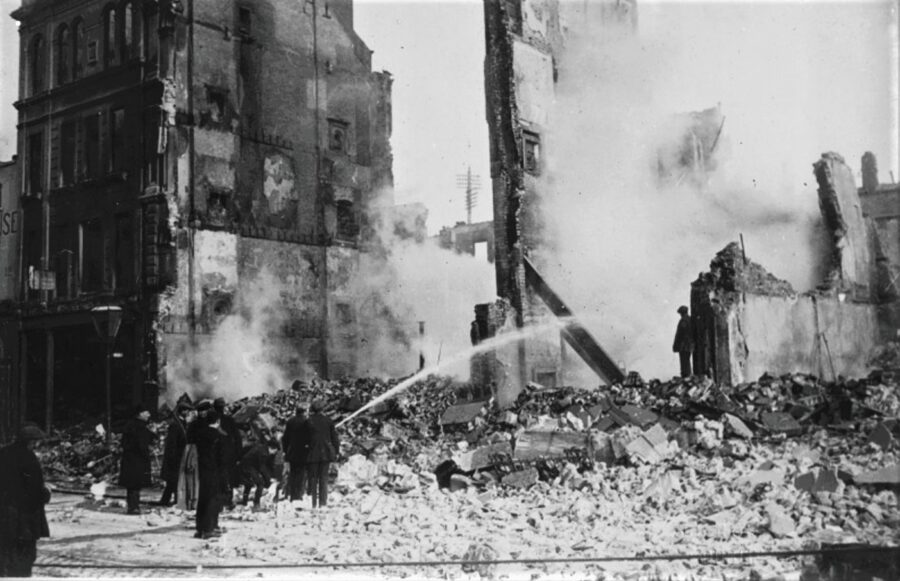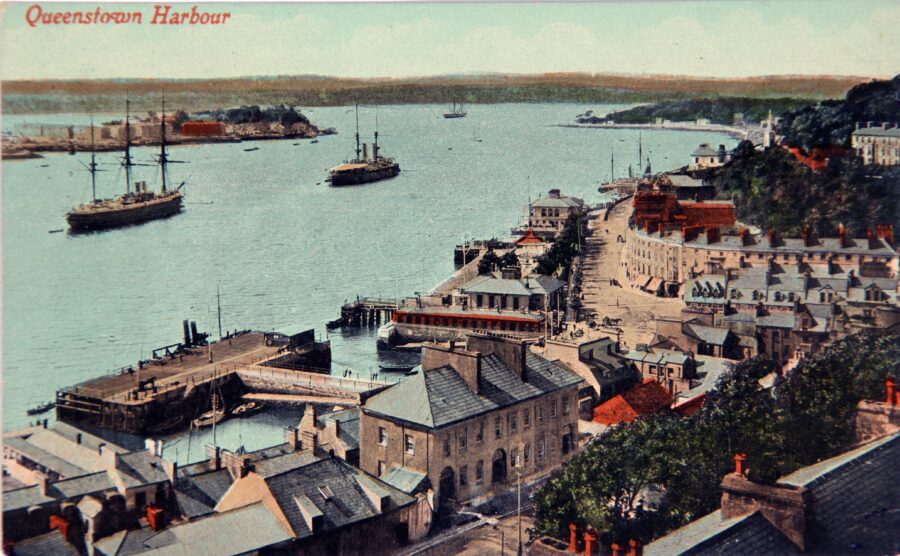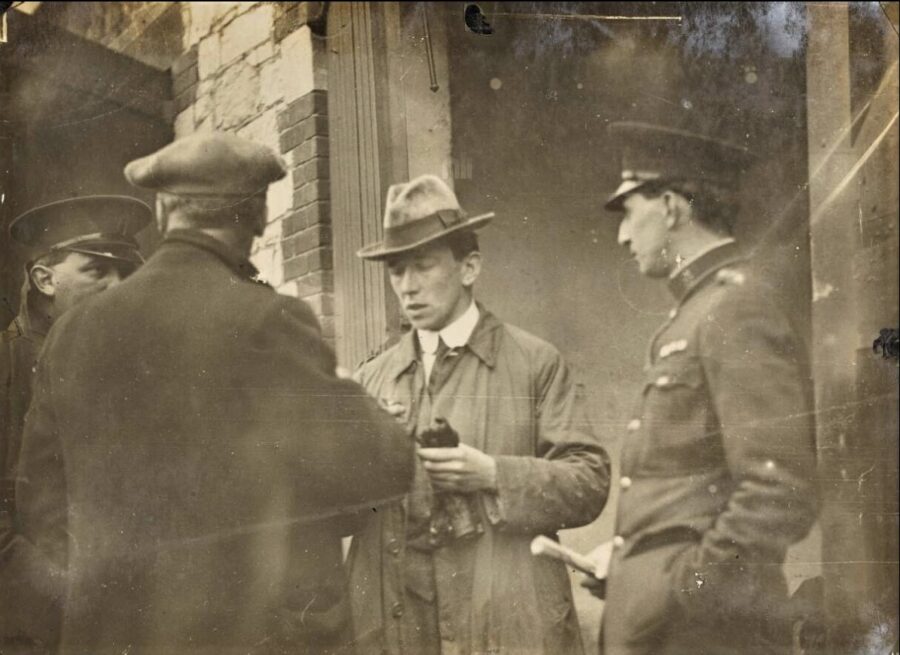
Kieran’s Our City, Our Town Article,
Cork Independent, 19 May 2022
Journeys to a Free State: The Evacuation of Victoria Barracks
The last detachments of military, in the occupation of Cork’s Victoria Barracks, filed out on 18 May 1922 at 7pm. Subsequently they embarked on the SS Classic from Custom House Quay. The formalities of the handing over were entirely unceremonious. At about 5pm Captain Hugh MacNeil IRA, came to the barracks, accompanied by another officer representing the Irish Provisional Government. He was met by Captain J G Maghahy, Divisional Officer, Royal Engineers, who escorted him through the buildings.
The Cork Examiner records that there were some 400 menofthe Hampshire, North Staffordshire, and York regiments formed up in the barrack square awaiting orders to proceed out of the space. They were fully equipped, with packs on their backs, and carrying rifles. Each company was under the command of an officer. Their wait for orders was prolonged, and over two hours passed before they got the command to fall in and to move away from their ‘at ease’ position. It is detailed that some of the men had pets with them – “dogs of varied descriptions”. One soldier was so attached to his dog that when the command of ‘march’ was given, he took the dog up inhis arms, and marched.
There in the square of the barracks, surrounded by huge stretches of buildings, rested all that was left of a garrison that frequently numbered thousands. Built between 1801 and 1806 and occupying 37 acres, the Georgian square became the largest military parade ground in Europe. The buildings included sleeping-quarters, stables, a church and a prison for the Cork-based British Army garrison. It was designed to house two infantry regiments, a cavalry, as well as headquarters staff of a military district. It was described in the early part of the nineteenth century as “conveniently” adapted to accommodate 156 officers and 1,994 men and stabling for 232 horses.
On 18 May 1922, at the top of the square the Union Jack flew from the standard. Scattered around it were the oval corrugated caged-in-huts, where IRA members were housed preparatory to being interned at one or other of the British internment camps throughout the country in 1921. To the east of this side of the barrack lay the military prison, so poignantly remembered by many men and women in the south as the Detention Barrack. In the early part of 1921, this place was the scene of the executions. The buildings in this particular section also included two fine residences, the houses of the Governor and the Chief Warder, as well as a terrace ofhouses that comprised the warders’ quarters.
On these prison grounds was also well remembered the courtmartial of Thomas Kent in 1916. He was sentenced to be shot and was buried where he fell. In 2015 his remains were exhumed and buried in the Kent family plot at Castlelyons.
The Cork Examiner details that shortly after the command to move out had been called a soldier carrying a handsaw, and accompanied by an officer, came towards the flagstaff on the square. The soldier was about to cut down the staff when Captain MacNeil approached the officer and protested, asking, “Is this necessary?”. The officer replied that it was necessary, and that the staff was coming down, adding “That flag was lowered for many a true soldier, and it is never going to fly a rebel flag”. The soldier then went on with the cutting of the mast, and just as he had finished the Union Jack was lowered, taken off, and placed at the back of an armoured car, which accompanied the departing troops. The mast then fell and remained on the ground. Another exhibition of ill feeling was the smashing of several windows in the officers’ mess.
The main body of the general public congregated outside the main gate of the barracks and awaited the departure of the troops. It was just 7pm when the gate swung open and the officers led the companies of soldiers out. The reception outside was mixed and the Irish Republican Police was present to prevent anything untoward or any exhibition of feelings between people holding very opposite views. For example, preparatory to the departure the unfurling of the tricolour flag by one woman caused some resentment to another and there was a short scuffle. The police intervened straight away.
The Cork Examiner further relates that there was a second entrance to the barracks from Rathmore Road, and through this at 6pm had come the advance party of the Irish troops. They remained just inside this gate until the British military left, and until Captain Maghahy handed over the lock and key of the front gate to Captain MacNeill.
The advance guard of the Irish soldier came around to the guard room, where they took up their position. The main body of the troops during this time had left Union Quay, and were marching, headed up by the Pipers Band, to the barracks. They numbered about 200, and fully armed, including being in the possession of a machine gun. A large crowd accompanied them en route, and when they reached the gate of the Barracks. They entered into possession amidst enthusiastic cheers. Captain MacNeil then handed over the key to Commandant Seán Murray of Cork No 1 Brigade, IRA.
The evacuation of Victoria Barracks meant that all British military had now left the southern capital.
Kieran’s Upcoming Tours:
Sunday 22 May 2022, Views from a Park – Tramore Valley Park, in association with the KinShip Project; meet at Halfmoon Lane gate, 2pm (free, 90 mins, no booking required).
Saturday 28 May 2022, The Friar’s Walk; Discover Red Abbey to the Greenmount area; Meet at Red Abbey tower, off Douglas Street, 2pm (free, 2 hours, no booking required).
Caption:
1151a. The British army, in Victoria (now Collins) Barracks Cork, taking down the Union Jack flag for the last time, 18 May 1922 (source: Kilmainham Gaol Museum).



